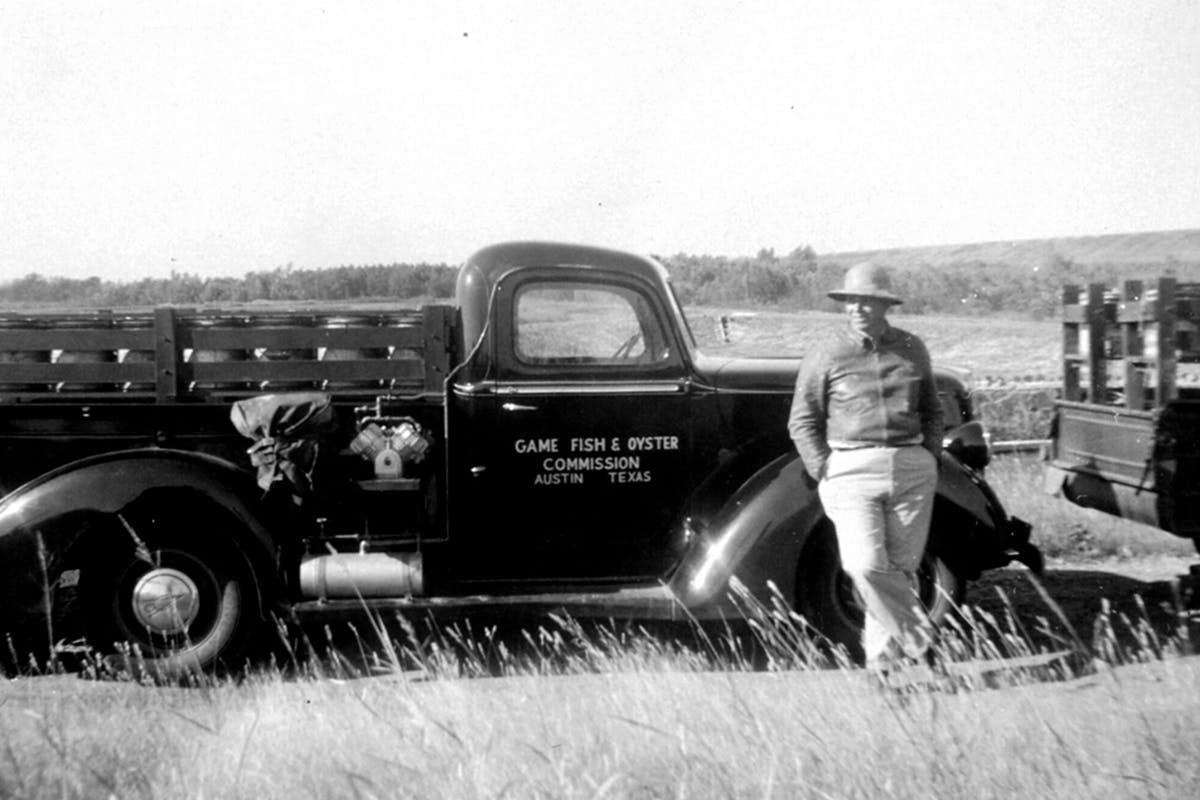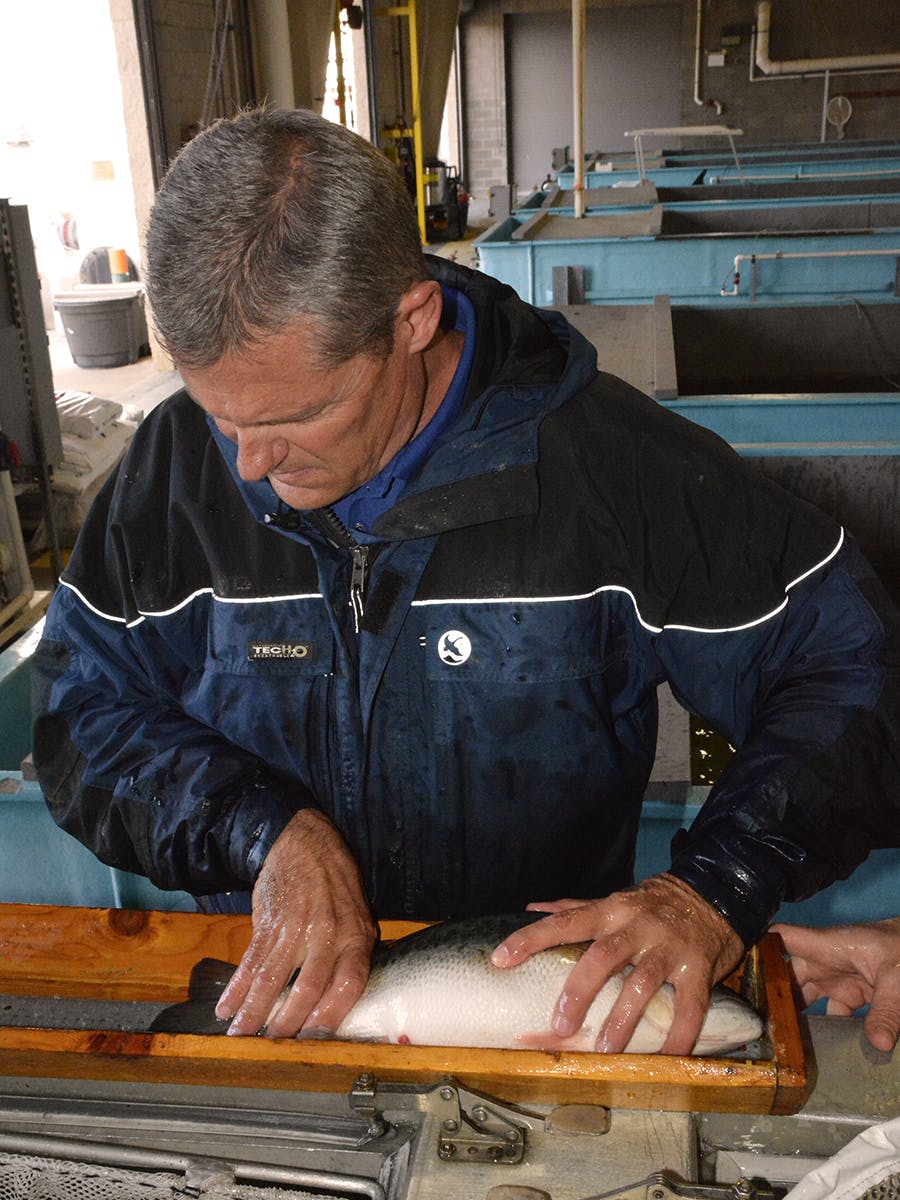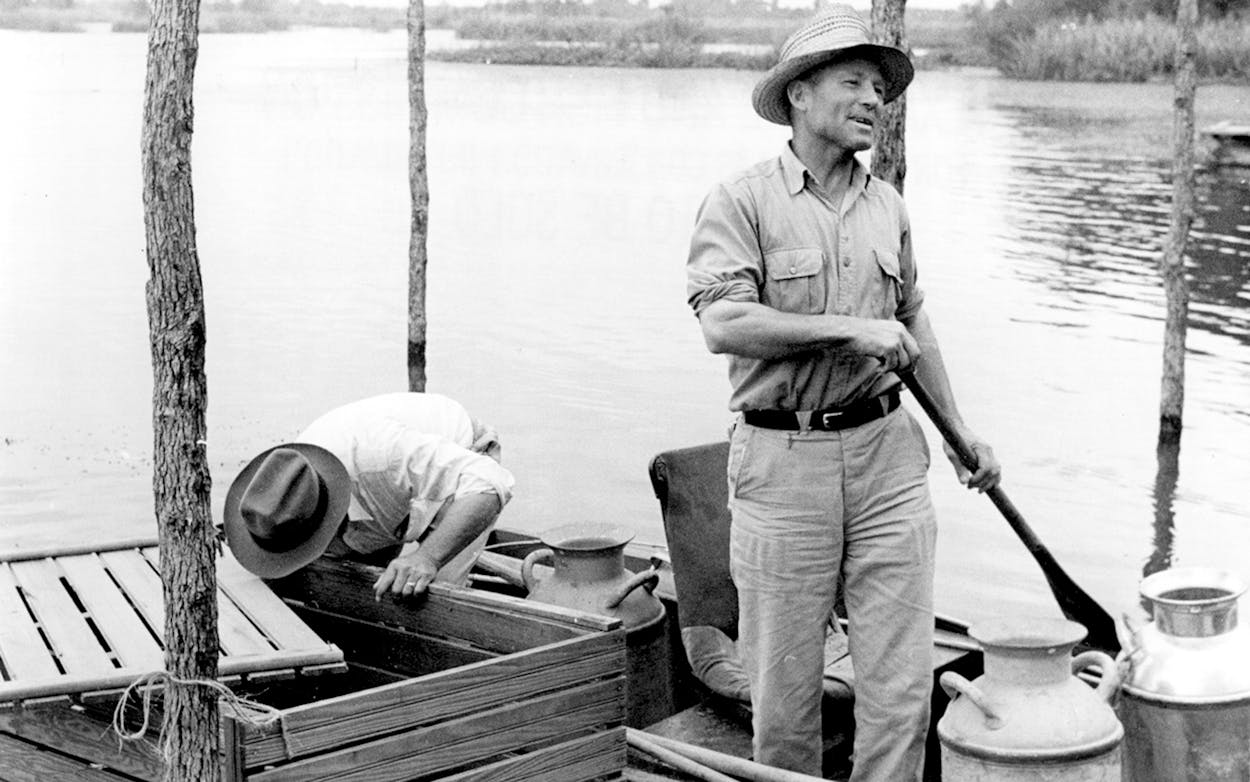On sunny days less than a mile south of the Texas Capitol, an armada of kayaks and paddleboards often paints a multicolored scene of tranquility on Lady Bird Lake.
While fewer pleasure-boaters are plying the waters during the coronavirus pandemic, there was truly nothing tranquil about this then undammed stretch of the Colorado River in 1874. The unregulated harvest of fish from the river had gotten so extreme that in the spring of that year, state lawmakers banned the use of poison to harvest fish from Texas waters. It was the first time in its history that Texas waded into the tricky business of regulating its fish population. But by summer, some people were convinced that the new restrictions did not go nearly far enough. The Colorado River had devolved into angling anarchy.
Gray-bearded Civil War veterans and “naked little urchins” were scattered for miles up and down the banks of the river, fishing poles in hand, according to a letter to the Weekly Democratic Statesman of Austin on July 11. All kinds of fishing boats, small nets, and unwatched trotlines were put to use. Whole groups of people were living in tents along the river and using seines to catch huge numbers of fish with brutal efficiency. “When the seine is drawn ashore, many fish, too small for food, are left lying in the sun to rot and impregnate the air with nauseating order,” complained the anonymous writer, who worried that the river would soon be stripped of all its fish. In response, the editors of the Statesman lamented, “Many persons are perfectly reckless in catching and destroying the finny tribe.”
Texas’s population was swelling at the time. New and old Texans alike depended on catfish, crappie, and other finfish to supplement their diet. What to do about the disappearance of this crucial food source? Government officials had an idea: they’d simply make more.
In 1879, the Texas fish commissioner—a brand-new position—established a hatchery at Barton Springs in Austin to breed, rear, and release an exciting import from Europe called the German or common carp. The commissioner shared the carp freely with landowners to stock in their private ponds, and his crews transported them by the tens of thousands to the state’s rivers.
Texas has been hatching and stocking fish ever since. From the 1870s on, more than one hundred species of fish and shellfish have been introduced to the state, about half of them brought here by state or federal agencies. The imports have transformed freshwater fishing in Texas, both by design and completely by accident—and for both better and worse.

The most celebrated breakthrough in Texas’s fish stocking program was the introduction of Florida largemouth bass in the 1970s. Florida bass were so big, they put the native bass to shame. Their arrival in Texas reservoirs juiced the local bass populations to record-breaking effect: the six biggest largemouths in Texas were all caught at Lake Fork, eighty miles east of Dallas, between 1986 and 1992, shattering a previous best that stood for six decades. It was a veritable bass bonanza.
The Texas Parks and Wildlife Department has continued to stock millions of bass with Florida genetics every year. But, perhaps surprisingly, the weights and lengths of the fish have plateaued. Of the fifty biggest largemouth bass caught in Texas, only two have been landed in the past five years.
The reason for the slowdown? Mother Nature. Florida bass had eons to adapt to the warm winters of the Sunshine State. Texas’s relatively cooler temperatures, on the other hand, have prevented bass from growing any larger, despite human intervention.
In other words, you can haul in all the Florida bass you want, but there are some things about native Texan bass that are simply better suited for Texas lakes. “We’ve been able to push those populations where they’ve reached a genetic equilibrium,” explains Craig Bonds, the inland fisheries director for the TPWD.
So Bonds is shifting gears. Instead of stocking to influence the future gene pool of the largemouth population, TPWD’s fish hatcheries are increasingly focused on the here and now—rearing bass with trophy potential in hatcheries and then releasing them into the wild in the hopes that they grow into enormous lunkers. The fish may never pass along their supersized genes, but they could end up on the hook of some lucky angler.
TPWD’s intent is twofold: make Texas fishing even more exciting, and drum up business for communities near popular reservoirs like Sam Rayburn, in East Texas, and Amistad on the border with Mexico. “Fishing-based economies develop around those lakes that provide jobs and an infusion of money into local businesses,” Bonds said.
There’s no doubt that hooking a thirteen-pound lunker would be a real thrill. But Texas’s longstanding efforts to manipulate its fish has not always gone so well. Take those imported carp. They have gone on to overrun nearly every body of water in Texas and much of the rest of the U.S. Widely reviled for dirtying the water and muscling out native fish, they have earned an evocative nickname: the sewer trout. (Although some anglers like them.)

Texas didn’t learn its lesson from the infamous carp invasion. In the 1970s, fish hatcheries started releasing smallmouth bass into the state’s waterways. Smallmouths, which are native to the American Midwest, easily breed with Guadalupe bass, the only black bass whose range falls entirely within the state. In almost no time, smallmouth had nearly muscled out the Guadalupe, which was named the official freshwater fish of Texas in 1989.
“I don’t know if [the hatcheries] even cared,” said Timothy Bonner, director of aquatic biology at Texas State University, “but they really didn’t have a concept that it could freely hybridize with the Guadalupe bass.”
In an ironic twist, the stocking programs that nearly destroyed the Guadalupe bass also saved it, if purely by accident. In 1973, Texas Parks and Wildlife employees took a couple thousand Guadalupe bass from their namesake river and set them loose in the Nueces, a Hill Country stream farther west, where the bass had never been found before. To this day, the descendants of those fish introduced to the Nueces are the last self-sustaining population of pure Guadalupe bass in all of Texas. Bonner is cautiously optimistic that relatively pure strains can survive in other rivers, such as the Blanco, where habitat restoration and the removal of smallmouth bass are bringing the state fish back from the brink.
In contrast with the Guadalupe bass, nobody is calling for the restocking of native Texan largemouths, which are classified as northern largemouth bass. That’s because we think of Florida and Texas bass as two strains of the same kind of fish. But are they really? Bonner is not so sure.
“Some would say that these should be separate species,” he says. “Some would say they should be subspecies. And that’s kind of politically driven: if you’re stocking a bunch of fish all over the place, then you want to call them all the same species, just with slight differences, which is not as bad as stocking a new species in an area where they never belonged.”
Bonner is also not sold on the benefit of continual stocking of species such as largemouths once they have become well established in a lake or stream. “This is where I get in trouble with [the Texas Parks and Wildlife Department],” Bonner said. “The people who promote hatcheries the most are the ones that are somehow tied to hatcheries. I talk to colleagues in Louisiana that do not have hatcheries as a big part of their fisheries plan, and they say, ‘We’ve got just as big of bass, and everybody’s happy.’”

To be fair, there’s no denying that Texas is nationally known for its big bass. Bonner suspects that the rise of larger largies has less to do with hatcheries, however, and more to do with two other changes. The first: size restrictions and daily bag limits that give fish more of a fighting chance to reach sexual maturity. The second: a cultural shift toward catch and release, rather than keeping every fish on the stringer to cook for dinner.
“I grew up in Parker County, and every time you went out and caught a fish, you ate it,” Bonner said. “It wasn’t until I started hearing about tournament fishing when I realized there’s a lot of people out here who just enjoy fishing—and not for eating.”
Plenty of people still fish for food, of course, especially at Squaw Creek Reservoir, which has been overrun in recent years by an unwelcome, if highly edible, guest.
No one knows for sure how the tilapia found their way into Squaw Creek Reservoir, a 3,272-acre impoundment nestled among the juniper-covered hills between Glen Rose and Granbury, in North Central Texas. Tilapia, a type of cichlid from Africa, are among the most ubiquitous farm-raised fish on the market because they’re so affordable to raise and have a bland taste. You can order tilapia blackened on a LuAnn Platter at Luby’s if you like.
One plausible theory for the tilapia’s arrival in Squaw Creek: a bass angler was using tilapia fingerlings as bait and then, at the end of the day, dumped out the bait bucket before heading home. Tilapia are warm-weather fish. Typically, they can’t survive cold snaps during the Texas winter. But the water in Squaw Creek is used to cool down the reactors at a Luminant nuclear power plant, so it’s bathtub-warm year-round. Once introduced to Squaw Creek’s perfect conditions, the tilapia went forth and prospered.
“We did not stock them, to be clear,” says John Tibbs, a Texas Parks and Wildlife Department biologist. “But they have come on strong.”
For evidence, just find Squaw Creek on Google Maps, then click over to the satellite view. In shallow areas where the lakebed is visible, you can see countless holes, called “spawning craters,” dug by the tilapia. Female tilapia produce up to 1,200 eggs at a time; in ideal conditions they can spawn every seventeen days.
Cue the fishing frenzy. Every weekend, families primarily from the Dallas–Fort Worth Metroplex descend on Squaw Creek to catch tilapia for food. The most successful parties throw cast nets from boats to catch the fish by the dozens or hundreds. They return their haul to the bank, where another group is waiting to clean the tilapia while the fishermen return to the open water to cast and cast again. According to TPWD rules, tilapia must be killed and cleaned before being removed from the reservoir, to reduce the chances of the fish spreading to other bodies of water.
“One Sunday, I watched a group clean six thousand tilapia right here,” said Rick Richesin, a mustachioed retiree from Glen Rose, who was fishing for bass next to the Squaw Creek cleaning station. “They had two assembly lines, with four people on each side, and were just getting it. Boom! Boom! Boom!”
I was visiting Squaw Creek on a clear and breezy Sunday in February. By the time I had arrived, shortly before noon, two large groups of tilapia netters had already come and gone with large hauls of fish, Richesin said. The arrival of a game warden had scared away others who may not have had fishing licenses or were using an unregistered boat, among other possible infractions.
Farther down the lakeshore, I met Epigmenio Lopez, a Dallas resident who was fishing for tilapia with a rod and reel. He was also trying out a cast net that someone else had abandoned on the bank. A month prior, Lopez had caught a dozen tilapia from the bank using pieces of live worms. A couple of months before that, he and a few friends had netted about a hundred tilapia from a boat in just one hour.
“Tilapia is the best freshwater fish for ceviche,” Lopez said, adding that he also likes to grill the filets with onion and garlic.
Today, the fish weren’t interested in him—or in me, for that matter. I spent an hour casting a net from shore but, unlike Texas’s rapacious fishermen in the 1870s, or even netters on Squaw Creek who destroy invasive tilapia by the hundreds or thousands, I didn’t catch a thing.
- More About:
- Hunting & Fishing
- Fishing









